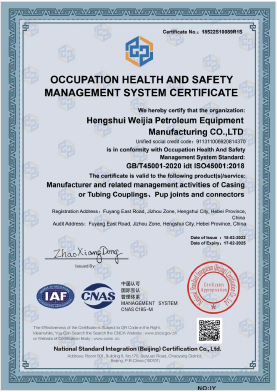- Afrikaans
- Albanian
- Amharic
- Arabic
- Armenian
- Azerbaijani
- Basque
- Belarusian
- Bengali
- Bosnian
- Bulgarian
- Catalan
- Cebuano
- Corsican
- Croatian
- Czech
- Danish
- Dutch
- English
- Esperanto
- Estonian
- Finnish
- French
- Frisian
- Galician
- Georgian
- German
- Greek
- Gujarati
- Haitian Creole
- hausa
- hawaiian
- Hebrew
- Hindi
- Miao
- Hungarian
- Icelandic
- igbo
- Indonesian
- irish
- Italian
- Japanese
- Javanese
- Kannada
- kazakh
- Khmer
- Rwandese
- Korean
- Kurdish
- Kyrgyz
- Lao
- Latin
- Latvian
- Lithuanian
- Luxembourgish
- Macedonian
- Malgashi
- Malay
- Malayalam
- Maltese
- Maori
- Marathi
- Mongolian
- Myanmar
- Nepali
- Norwegian
- Norwegian
- Occitan
- Pashto
- Persian
- Polish
- Portuguese
- Punjabi
- Romanian
- Russian
- Samoan
- Scottish Gaelic
- Serbian
- Sesotho
- Shona
- Sindhi
- Sinhala
- Slovak
- Slovenian
- Somali
- Spanish
- Sundanese
- Swahili
- Swedish
- Tagalog
- Tajik
- Tamil
- Tatar
- Telugu
- Thai
- Turkish
- Turkmen
- Ukrainian
- Urdu
- Uighur
- Uzbek
- Vietnamese
- Welsh
- Bantu
- Yiddish
- Yoruba
- Zulu
Understanding the Functionality and Applications of Pup Joint Tubing in Oil Drilling
Understanding Pup Joints and Their Role in Oil and Gas Operations
In the oil and gas industry, the efficient movement of fluids from one location to another is crucial for successful operations. Among the various components that facilitate this process, pup joints play an essential role. A pup joint is a short piece of pipe with threaded ends, typically used to connect two longer lengths of tubing or pipe. Although small in size, pup joints are integral to ensuring the flexibility and adaptability of drilling and well completion operations.
Definition and Specifications
Pup joints come in various lengths and diameters, with the standard length usually ranging from 2 to 4 feet. However, they can be manufactured to specific lengths based on operational needs. The sizing of a pup joint is crucial; they are designed to fit standard pipes, which makes them versatile in various applications.
Made from high-strength steel, pup joints are engineered to withstand the high pressures and harsh environments of oil and gas wells. They are available in several grades, which define their strength and suitability for different applications. For example, API (American Petroleum Institute) standards specify numerous grades that are widely accepted in the industry. Selecting the appropriate grade is critical, as it directly impacts the safety and efficiency of drilling operations.
Applications in Oil and Gas Operations
Pup joints are primarily used in drilling operations, specifically in wellbore construction and maintenance. When assembling the tubular string for drilling, the exact length needed may not always be available. This is where pup joints come into play; they allow operators to make precise adjustments to the length of the string without having to use multiple long sections of tubing. This ability to customize the assembly improves functionality and reduces unnecessary weight, which can be a critical consideration in deepwater drilling scenarios.
In addition to drilling, pup joints are also employed during the completion phase of well operations. They can be used in combination with other components like packers and valves to create a seal or barrier within the wellbore. Their short length allows for better ergonomics when installing or adjusting these systems. Furthermore, pup joints can serve as connectors in production tubing strings. This role is vital in maintaining the integrity and structural reliability of the tubing, ultimately affecting the well's production efficiency.
pup joint tubing

Installation and Maintenance
Installing a pup joint may seem straightforward, but it demands precision and adherence to safety protocols. Operators need to ensure that the threads are properly lubricated and aligned to prevent cross-threading, which can lead to serious failures. Additionally, thorough inspection before installation is essential. Checks should include looking for wear, corrosion, or other damage that could compromise the joint's integrity.
Routine maintenance and monitoring are also important in prolonging the life of pup joints in service. Regular inspections help identify potential issues early, allowing for preventive measures to be taken. Moreover, understanding the operating environment—such as pressure, temperature, and the chemical composition of fluids—can aid in selecting the right materials and configurations for pup joints.
Challenges and Innovations
While pup joints are vital, they are not without challenges. The dynamic nature of oil and gas environments means that joints can experience fatigue and wear over time. This raises concerns about the safety and reliability of these components. Innovations in materials science have led to the development of more durable options, such as corrosion-resistant alloys and advanced coatings, which can significantly enhance the lifespan of pup joints.
Furthermore, with the rise of automation and advanced monitoring technologies, there is potential for more sophisticated maintenance strategies. Implementing real-time monitoring systems can help operators track the condition of pup joints during operations, allowing for timely interventions and minimizing downtime.
Conclusion
In conclusion, pup joints, while often overlooked, are indispensable components in oil and gas operations. Their versatility and efficiency fundamentally contribute to the success of drilling and production activities. As the industry continues to evolve, advancements in materials and technology will likely enhance the performance and reliability of pup joints, ensuring they remain a key element in the complex machinery that drives oil and gas exploration and production.
-
Tubing Pup Joints: Essential Components for Oil and Gas OperationsNewsJul.10,2025
-
Pup Joints: Essential Components for Reliable Drilling OperationsNewsJul.10,2025
-
Pipe Couplings: Connecting Your World EfficientlyNewsJul.10,2025
-
Mastering Oilfield Operations with Quality Tubing and CasingNewsJul.10,2025
-
High-Quality Casing Couplings for Every NeedNewsJul.10,2025
-
Boost Your Drilling Efficiency with Premium Crossover Tools & Seating NipplesNewsJul.10,2025







